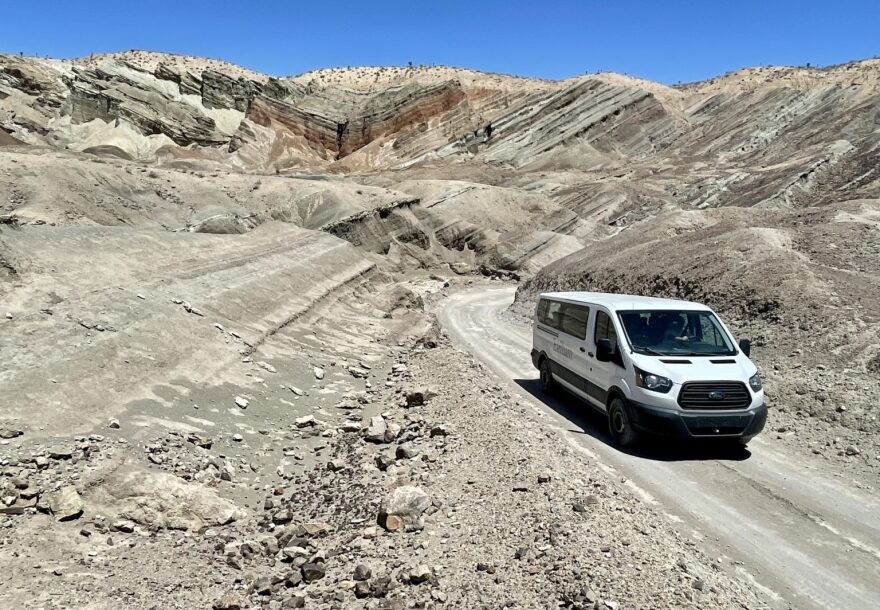Finding fossils can be very time consuming, but Earlham College and the Western Science Center have discovered a way to make it less so.
Using a combination of drones and 3D modeling, scientists digitally manipulated the landscape to identify possible fossil locations that are hard to see from the ground. In just 30 minutes, they were able to find prehistoric camel and three-toed horse bones in the Mojave Desert.
“Historically, paleontologists have returned to locations in the desert where fossils have already been found. The spiky vegetation and steep terrain make this a hard place to work and it’s very time consuming,” says Earlham Geology Professor Andy Moore, who led a team of students on a research trip this summer.
The students flew drones and created digital landscape models from GPS data, allowing them to zero in on new fossils.
The Western Science Center, a natural history museum, is a leader in 3D modeling and photogrammetry. It’s executive director, Alton Dooley, is friends with Moore.
Earlham took the same techniques the museum had been using and applied it on a landscape scale.
“The neat thing about drone imagery is that it really does allow you to see, to develop a 3D digital model, and that allows us to see the terrain in ways that previously we really haven’t," says Shannon Hayes, Earlham geology curator. "And I think that’s what allowed us to do fossil digital prospecting, which is the new and different thing.”

Western Science Center Collections Manager Brittney Stoneburg remembers the San Bernardino National Forest being excavated when she was a child. Recently it started getting to the point where researchers were finding less and less.
“And then the Earlham crew came with their drone and, like Shannon said, made a lovely 3D model of our field site that we were able to manipulate, turn it around, look at it and we were able to see there should be fossils up this ridge,” she says.
That’s where the crew discovered new fossils in a half-hour.
Dooley thinks other places will start to adopt methods like this. “It’s unusual enough that we presented on this method at this year’s Geologic Society of America meeting.”





